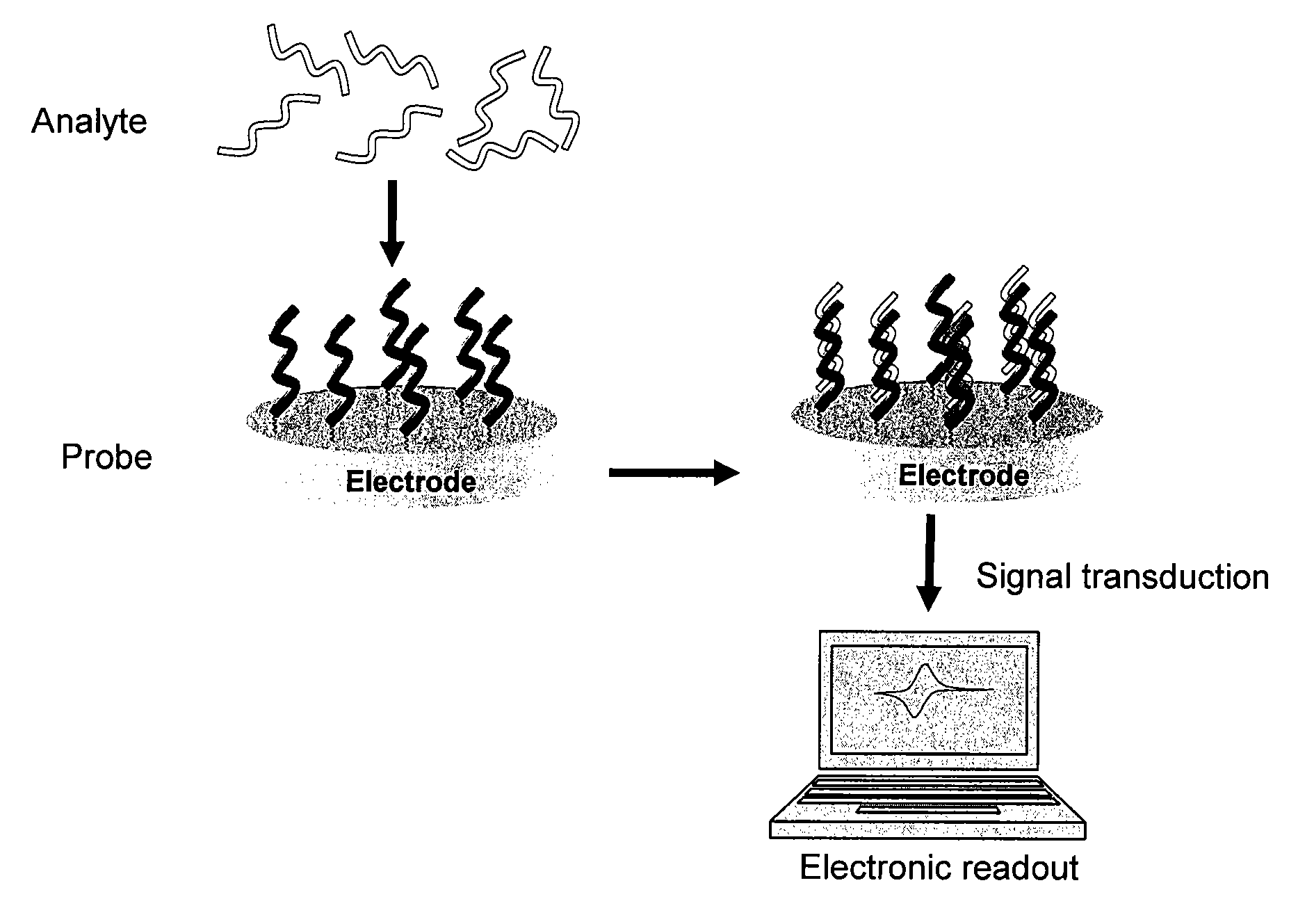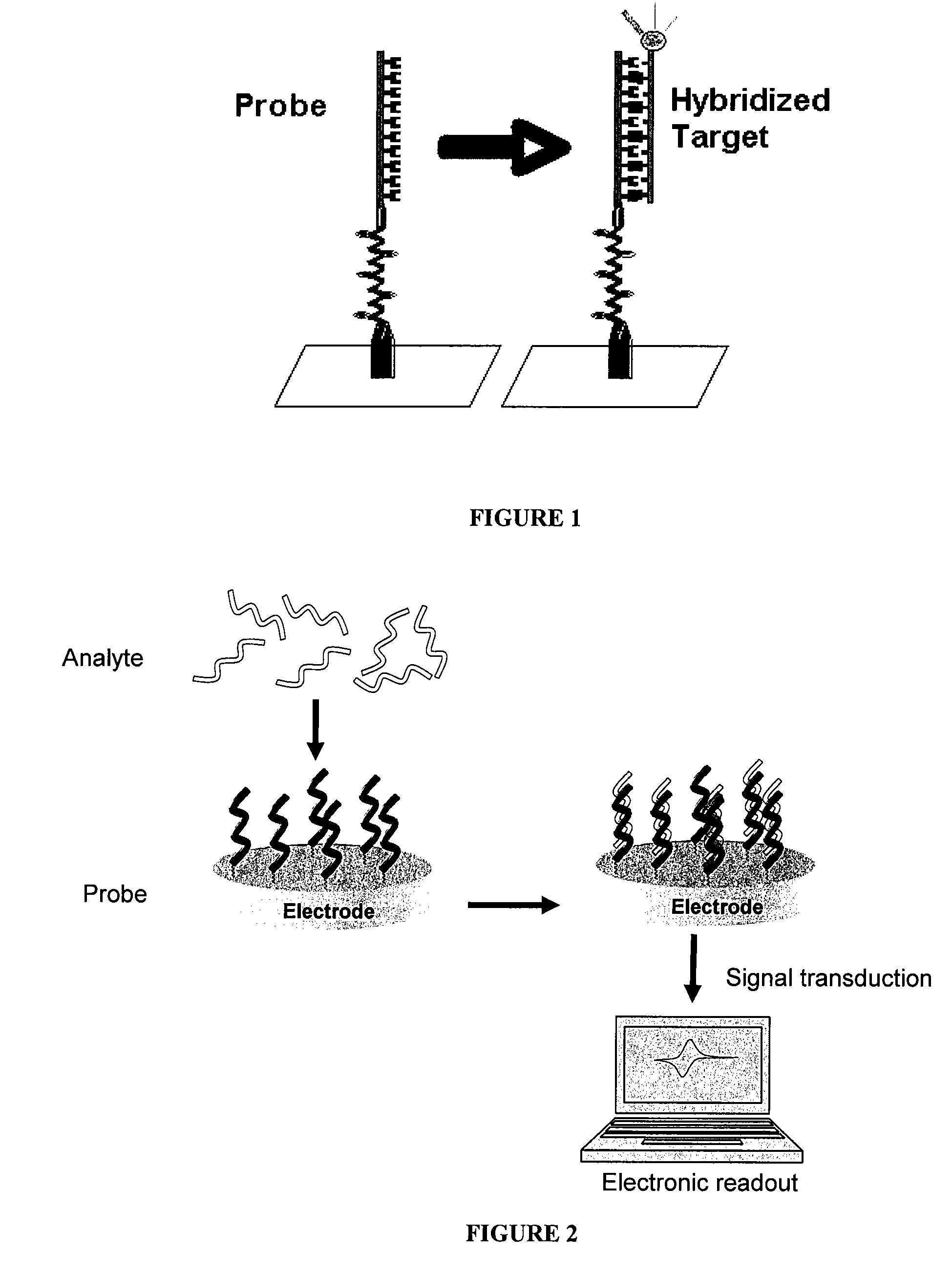Electrochemical Detection of Substrates
a technology of electrochemical detection and substrate, applied in the field of detection of probetarget substrate binding, can solve the problems of significant limitations, high cost and time consumption of probe printing and target dye-labeling processes, and detection requires highly sophisticated optical scanners
- Summary
- Abstract
- Description
- Claims
- Application Information
AI Technical Summary
Benefits of technology
Problems solved by technology
Method used
Image
Examples
examples
Materials
[0225]Photoresist AZ1512 was obtained from Clariant Corporation. ACS-grade solvents and reagents from Fisher were used for synthesis, electrode preparation and functionalization. Optima-grade acetonitrile (Fisher) was used for electrochemical studies. Tetra-n-butylammonium hexafluorophosphate (TBAPF6), 2,2,6,6-tetramethylpiperidinooxy (TEMPO) (99%), 4,4′di-tert-butyl-2,2′-bipyridine (DTB), iron(II) perchlorate hydrate, N-hydroxysuccinimide (NHS), phenothiazine (PTZ) and hydrated hydrazine (98%) were purchased from Aldrich Chemicals. 1-(3-dimethylamino)propyl)-3-ethylcarbodiimide hydrochloride (EDC), tris hydroxymethyl aminomethane hydrochloride (Tris), disodium ethylenediamine tetraacetate (EDTA), sodium dodecyl sulfate (SDS) and sodium citrate were purchased from Fisher Scientific. RuCl3 was obtained from Johnson Matthey. 4,4-Dimethyl-2,2′-bipyridine (DMB) (obtained from Reilley Industries) was recrystallized from ethyl acetate. Cobalt(II) perchlorate hydrate was obtained ...
PUM
| Property | Measurement | Unit |
|---|---|---|
| conductive | aaaaa | aaaaa |
| oxidation-reduction reaction | aaaaa | aaaaa |
| current flow | aaaaa | aaaaa |
Abstract
Description
Claims
Application Information
 Login to View More
Login to View More - R&D
- Intellectual Property
- Life Sciences
- Materials
- Tech Scout
- Unparalleled Data Quality
- Higher Quality Content
- 60% Fewer Hallucinations
Browse by: Latest US Patents, China's latest patents, Technical Efficacy Thesaurus, Application Domain, Technology Topic, Popular Technical Reports.
© 2025 PatSnap. All rights reserved.Legal|Privacy policy|Modern Slavery Act Transparency Statement|Sitemap|About US| Contact US: help@patsnap.com



